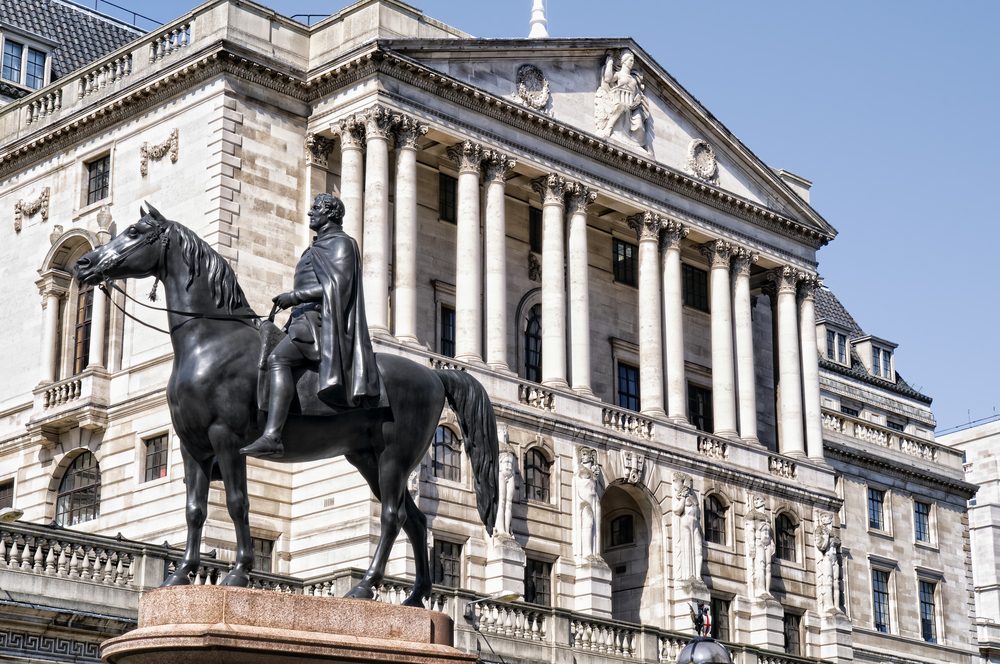
The Bank of England lowered inflation estimates yesterday and suggested the central bank would tolerate inflation running above its target. This saw the pound drop against both the euro and US dollar. The Brexit White Paper didn’t thrill the markets much either, but, with services data released across Europe and employment data out of the US, we could see a volatile end to the week.
GBP: sterling slides on ‘Super Thursday’
After a strong start to the week, sterling continued to push slightly higher in early trading yesterday, ahead of the Bank of England interest rate announcement and disclosure of the quarterly inflation report. In typical fashion of ‘buy the rumour, sell the fact’, sterling dropped on the release of the inflation report despite the positive tone from the release.
As expected, the BoE kept interest rates on hold and was non-committal on the direction of future interest rates. The BoE upgraded its expectations on growth in 2017 to 2% from 1.4% in November. The upgrade is a reaction to the continued positive flow of economic data following on from last year’s infamous Brexit vote. In addition, the BoE said that the upgrade was partly the result of higher spending and investment contained in Chancellor Philip Hammond’s Autumn Statement. However, the BoE sees the economy slowing in 2018 as it expects to see growth at 1.6%.
Looking at inflation, it is no surprise that the BoE sees this at elevated levels as sterling remains roughly 16.5%, down from levels seen pre-referendum. The central bank expects to see inflation peaking at 2.7% in 2018, well above the target of 2%. Once again, BoE Governor Carney said that the BoE is prepared to tolerate inflation running above its target. This is the main reason why sterling slid from its highs. In January, Carney suggested interest rates could go up or down as the BoE strikes a difficult balance between supporting growth and managing inflation. In contrast, his comments and tone suggested that the BoE is in no rush to be adjusting interest rates. On Brexit and Article 50, Carney stated: ‘The Brexit journey is really just beginning. While the direction of travel is clear, there will be twists and turns along the way.’ This does give the central bank room to manoeuvre if required.
Following parliament passing the vote on the second reading of the Brexit Bill, the government published a White Paper setting out its Brexit plans. The White Paper set the themes of the government’s goals for its negotiations with the European Union which consisted of 12 ‘principles’ including migration control and law making. As we have seen since the referendum, any major political developments from this could have an impact on sterling.
Construction PMI data was released yesterday morning which showed sector expansion but came out lower than anticipated. This came out on the back of the manufacturing PMI released on Wednesday with the pace of expansion hitting market estimates.
Looking to the day ahead, we have the key PMI data released for the service sector, which is the dominant sector in the UK. Services make up between 70-80% of the economic activity in the UK, so this is a key reading. In addition, the all-important monthly jobs report is set for release from the US which determines the direction of interest rates, and which could, in turn, have an effect on currency rates.
EUR: euro stays in positive territory
This week saw a relatively positive tone for the Eurozone in general, although some individual countries had a more difficult time. The euro continued to strengthen against the dollar, reaching its highest level since December, but this is mainly on the back of US dollar weakness rather than euro strength.
European consumer price inflation data beat expectations this week, and neared the ECB’s 2% target, but this inflation milestone was slightly overshadowed by the German equivalent coming in under expectations. The Eurozone’s biggest economy also saw retail sales and key manufacturing PMI fail to match expectations, with the former surprisingly falling by 0.9% in December.
Yesterday’s speech by ECB President Draghi focused on the benefits of staying in the Eurozone (and maintaining the single-currency) and lacked any distinct monetary policy hints. He also pushed back on comments which suggested the euro was at fault for the lack of growth in certain Eurozone countries, stating ‘low productivity growth’ was due to ‘deep-rooted structural problems’ and not the currency.
Political headwinds remain at the forefront of traders’ minds with the French elections nearing and the corruption probe surrounding the front-running candidate Fillon.
Today sees another raft of PMI data, this time for the services sector. Data from Germany, France, Italy and Spain will be released, as well as data for the Eurozone as a whole.
USD: dollar led by Trump’s comments
Following on from the US dollar’s worst January performance for 30 years, the currency had a poor start to the week, losing ground against most of its trading partners as the market continues to swing on President Trump’s comments.
This week Trump complained that every ‘other country lives on devaluation’, while the US is sat by ‘like a bunch of dummies’.
We had a fairly uneventful Federal Reserve meeting on Wednesday, with no change as was widely expected. Further interest rate rises this year are very much on the cards and we should expect similar increases in 2018 and 2019.
There was a positive tone from the labour market, with data releases beating market estimates. ADP non-farm labour data came out much better than expected, whilst unemployment claims fell again and remain below the 300,000 mark for the 100th straight week, hitting 246,000 versus expectations of 251,000.
Today the week ends with the vital non-farm payrolls data. Then the markets can enjoy a brief rest before looking forward to a third week of President Trump.
For more on currencies and currency risk management strategies, please get in touch with your Smart Currency Business trader on 020 7898 0500 or your Private Client trader on 020 7898 0541.

 020 7898 0500
020 7898 0500
